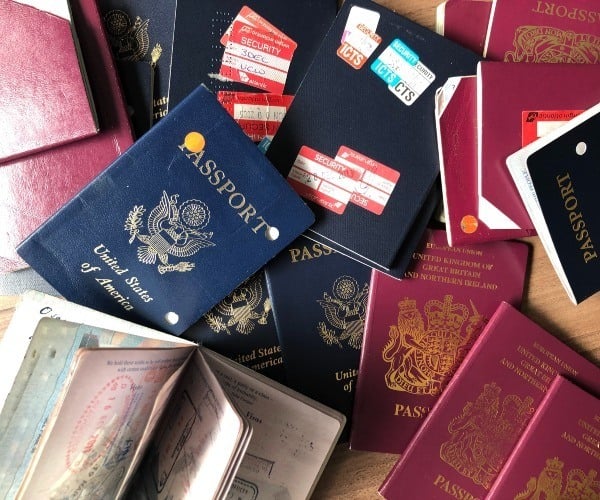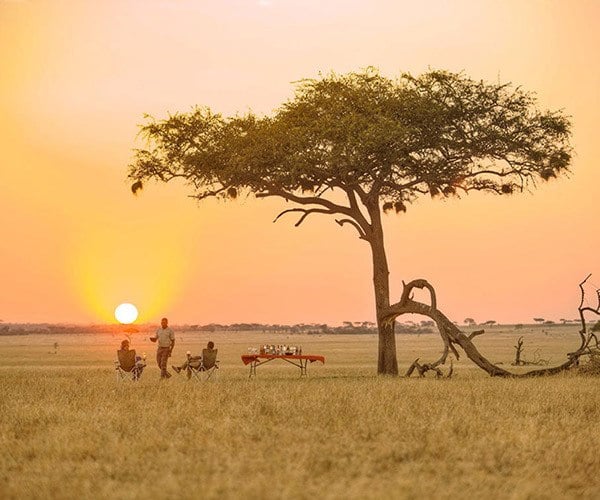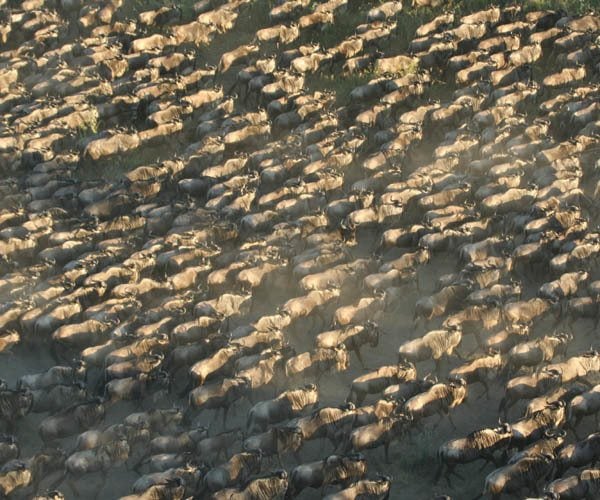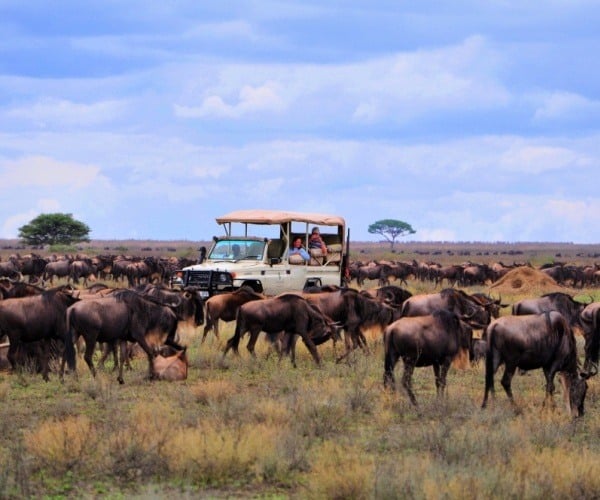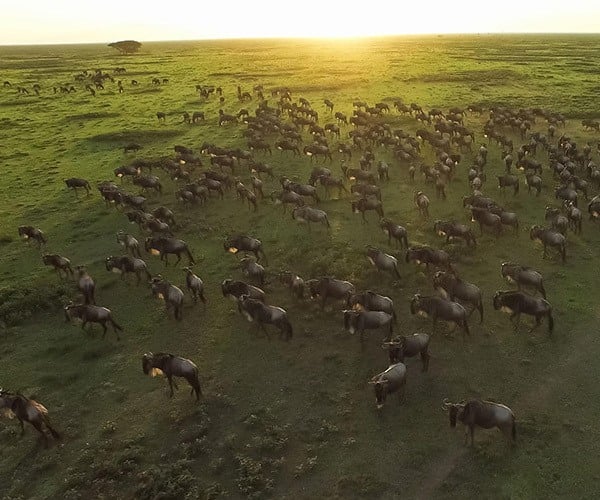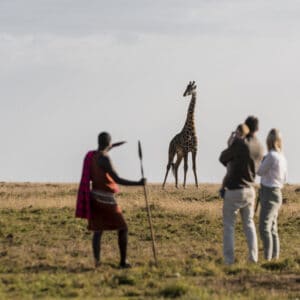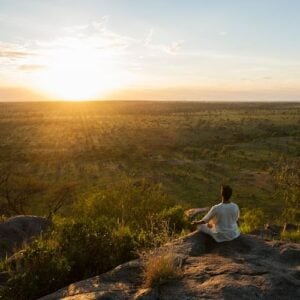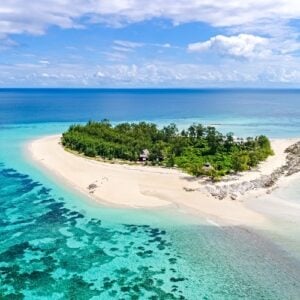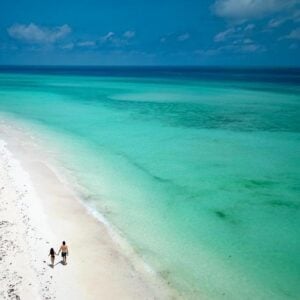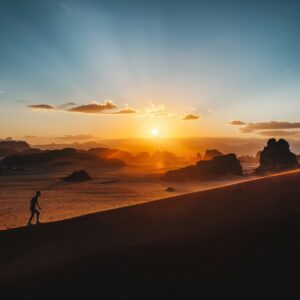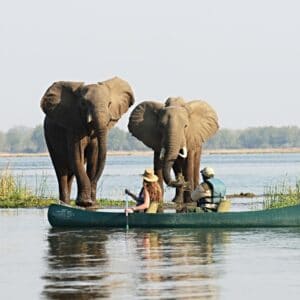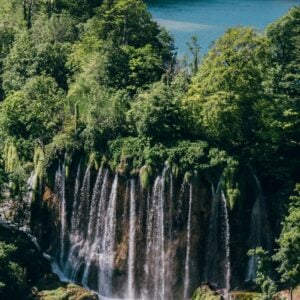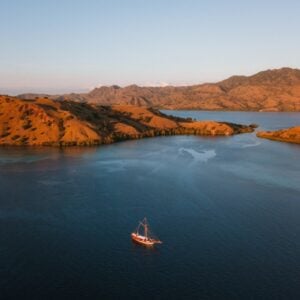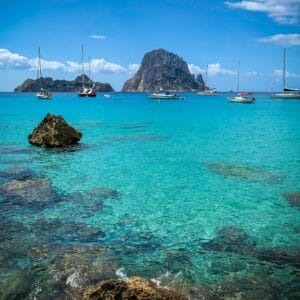Serengeti Travel Guide
Home > Travel Guides > Tanzania > Serengeti Travel Guide
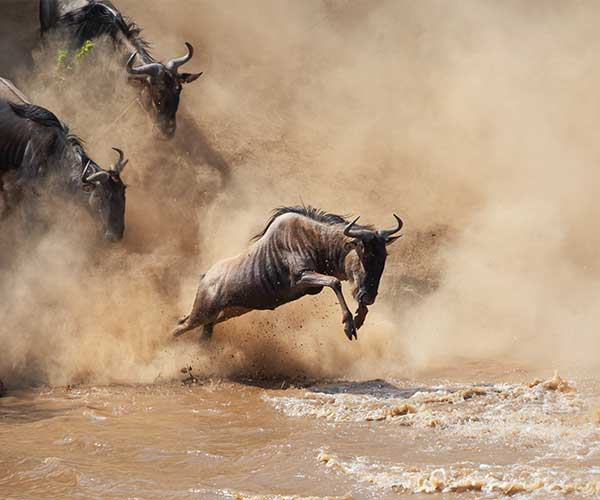
LUXURY TRAVEL
Serengeti Travel Guide
Teeming with life, drama and with unbelievable scenery, the endless plains of The Serengeti National Park are breathtaking to behold. Two million migrating grazers make their way around the plains each year in the most spectacular natural event on the planet: the Great Wildebeest Migration. And where there are grazers, there are always predators. This fusion of spectacle, scenery and predator action ensures the Serengeti earns its title as one of the finest remaining wildernesses on the planet.
- Introduction to the Serengeti
- History of the Serengeti
- Where to stay in the Serengeti
- Accommodation in the Serengeti
- Places to visit from the Serengeti
- Things to do in the Serengeti
- Food in the Serengeti
- Getting around the Serengeti
- When to visit the Serengeti
- Events in the Serengeti
- Luxury travel tips
- Language and culture
- Useful phrases
- Weather in the Serengeti
- Useful information
Introduction to the Serengeti
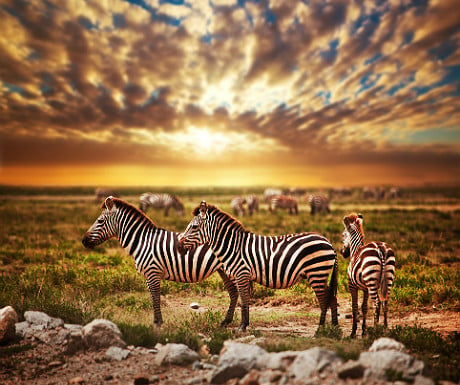
The Serengeti directly translates to “endless plains” in Maasai language. And endless they are: ten times the size of Yosemite National Park and one and a half times the size of Wales, The Serengeti is immense.
Located in northern Tanzania, the Kenyan border separates The Serengeti from the Masai Mara. Comparatively to the famed Mara, The Serengeti’s size means visitors are less concentrated. This is especially true in the months when the wildebeest hurtle across the crocodile infested Mara River and can be found in both parks (the Mara river flows across both the Serengeti and the Masai Mara in a backwards L shape).
To the south of the Serengeti sits the Ngorongoro Crater: a vast volcanic caldera packed full of wildlife. This is the Garden of Safari-Eden; it is simply breathtakingly beautiful and its high wall contains a plethora of fantastic wildlife. The volcanic soil surrounding the crater seeping into the southern Serengeti plains provides ample nutrients for young calves, ensuring the wildebeest herds return to this region every February without fail.
Although it would be rare to visit The Serengeti without the intention of seeing The Great Wildebeest Migration, this is by no means its only draw. The Serengeti captures the essence of a classic African savannah: acacia trees flag endless horizons, leopards lurk in tall grasses and lions sit proud upon bouldering kjopes. Meanwhile, visitors fall asleep under canvas to the echoing buzz of the surrounding night. A night in The Serengeti is a truly immersive experience and the memory draws visitors back year after year. No safari in the Serengeti is the same as the last. It is an awe-inspiring park.
The Great Wildebeest Migration
Arguably the Serengeti’s biggest draw, the Great Wildebeest Migration is spectacular. Two million grazers of wildebeest and zebra move around the Serengeti in a circular route year-round. Contrary to a common misconception, The Migration can be found somewhere on the vast plains in every month of the year.
The trick is to visit when the herds are most concentrated: namely, in calving season (December to March) when they congregate in the southern plains, and then as they criss-cross along the Mara river in the north of the park (July to October).
Although these are the best months get the full impact of the herds, The Migration is unpredictable. Especially when it comes to river crossings, visitors may wait on the shore of the Mara river for days and never see them take that leap. Then, suddenly 1,000 might cross. It is not an exact science but when the wildebeest do take that leap, it is a staggering scene to witness.
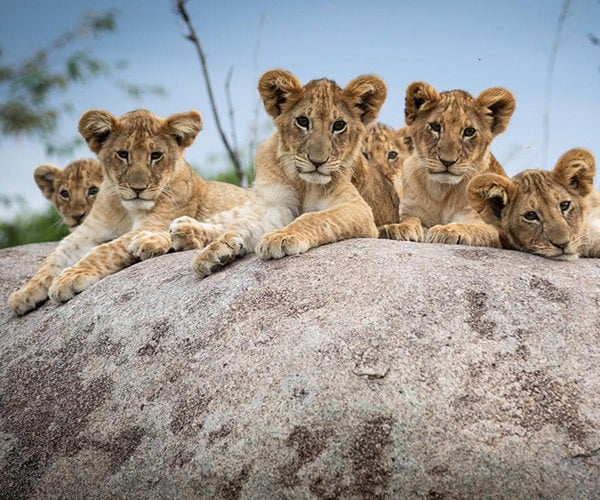
The only month the wildebeest will always be where they are expected is in February, as they return to the southern plains for calving season. This is the time to go for endless specks of wildebeest dotted all the way to the horizon. Calves are born and within minutes are up and running, alongside their mothers. Up to 8,000 calves are born every day in the Serengeti, so witnessing a birth in February is not difficult. And where there are vulnerable calves, predators also lurk, flocking from miles around to take a bite out of this moving feast. Calving season is phenomenal for witnessing the sheer scale of the Migration, and the best time. of year to witness some safari action.
However, in the southern Serengeti there is no Mara river, which means no river crossings. So travellers must decide which stage of the herd’s migration appeals to them the most.
History of the Serengeti
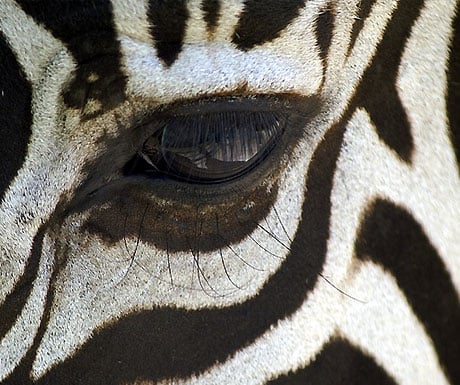
Like much of East Africa, the Serengeti was once grazing land for Maasai people. In response to a scarcity of lions due to hunting, in 1921 the British made a 3.2 square mile game reserve.
And so the Serengeti was born in 1951.
As the Serengeti grew, the Maasai people were relocated to the Ngorongoro Highlands where they are still found today. This is still a topic of much controversy in Tanzania.
However, The Serengeti is now the beating heart of tourism in Tanzania and attracts visitors from far and wide year after year.
The Serengeti first received global recognition in the 50’s, after it was the subject of a major conservation film “Serengeti Shall Not Die” by Bernhard Grzmek and his son, Michael. It soon after became a sought after destination for safari goers and intrepid explorers.
The first foreign explorer to stumble upon The Serengeti was Bauman in 1892. Into the 1900s and reports of very few buffalo and elephant seem unimaginable, as they can be found in abundance today. However, in the early 1900’s it was not elephant and buffalo which were the target for hunting parties, but lions. It was commonplace for up to 50 to be killed in one hunting trip. As such, the lion population shrivelled into almost nothing. This sparked the creation of the game reserve, and The Serengeti as we know it today. Now, lions are abundant and poaching laws are strict throughout the park. Today, The Serengeti is home to the greatest concentration of predators on the planet.
Where to stay in the Serengeti
Where to stay on your Serengeti safari depends on when you visit, and where the migration could be at this time of year.
The south of the park offers the Serengeti ideal in all its glory. This is a canvas of harsh sweeping plains, lonely acacia trees and offers the ultimate wilderness experience. Wildlife is fantastic year round, as in the depths of dry season volcanic soils feed life into otherwise barren grasslands.
The Southern plains are fabulous year-round, but come into their own in December to March when carpeted with thousands of calving wildebeest. Vulnerable calves attract predators from far and wide, making it a particularly exciting patch for a safari. Wild as it is, the southern Serengeti is not home to grand luxurious permanent hotels, but sees authentic mobile tented camps come and go as they move with the migration.
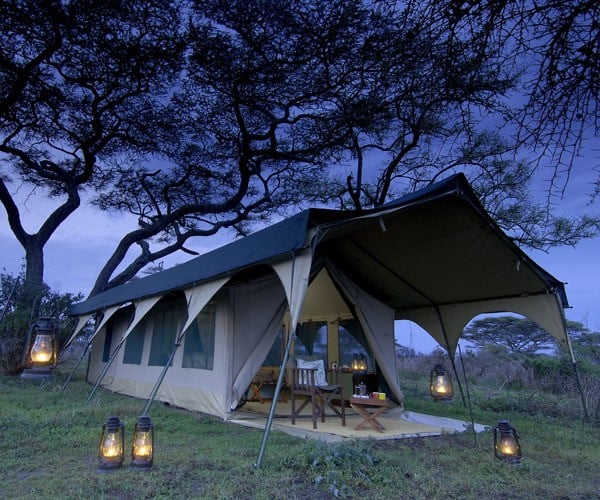
The northern Serengeti can be divided to two areas: north and south of the Mara River. It is important to stress, when in Tanzania, the Mara River does not mark the border between Tanzania and Kenya, but divides the northern Serengeti into two sections: Kogatende (south of the river) and the Lamai wedge which sits north of the Mara River and south of the Kenyan border.
Kogatende is the most popular overnight area in the Serengeti to see the famed river crossings from. Here, undulating scenery broken only by the mighty Mara River and impressive kjope boulders is what awaits. Not to mention the wildlife which call it home: the staggeringly big crocodiles which lurk beneath the surface of the Mara River and the lions which laze, sunbathing on sandy rocks. The very best time to visit this area is when the wildebeest arrive and make their treacherous leap of faith into the lair of gluttonous crocodiles: a scene which can be witnessed from July through to October, and sometimes November.
Lamai offers similar scenery to Kogatende, but with a few more kjopes and a few less tourists. It is just as brilliant as Kogatende in terms of migration river crossings as it covers the same stretch of the Mara River. However, Lamai could have the upper hand as its resident predator concentrations are excellent. This is no surprise, as this little wedge of wilderness straddles the Masai Mara and all the wildlife which comes with it.
Singita Grumeti is a private slice of the Serengeti, owned by luxury lodge company Singita. Here, you will find the creme de la creme of luxury Serengeti safari. With three sublime properties, the guiding is phenomenal and the wildlife fantastic. The Grumeti River cuts through this area and in June is the site of mini river crossings of The Great Migration as they pass through these plains. For unbeatable luxury and no other visitors, Grumeti is king.
Seronera is the name for the central Serengeti. Here, there are endless accommodation options from intimate tented hideaways to a grand Four Seasons Hotel. If you are looking for an off-season safari then it is the place to go with durable accommodation and phenomenal resident wildlife. However, in the popular winter months of July to October, this area can be busy with vehicles buzzing around. In these months, it is advisable to head an hour’s drive east to the incredible Namiri Plains: with only two camps and astonishing cheetah concentrations, game drives are unbelievable – and completely undisturbed.
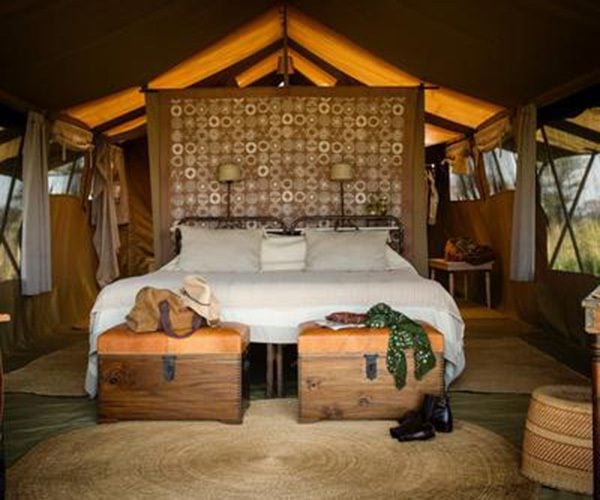
Accommodation in the Serengeti
Accommodation in the Serengeti is the definition of barefoot luxury. The atmosphere of any East African safari is best captured under canvas, where visitors can truly immerse themselves into the wilderness. Tented camps are magic: these are not sticky tents with restrictive sleeping bags and roll mats, but structures littered with luxuries: a cosy double bed, hot water, flushing loos and some of the best morning views in the world.
The most quintessentially Serengeti camps are the mobile ones – though their mobility certainly does not mean luxury is compromised. These are amazing spacious tented camps which move two times throughout the year to be best placed for viewing the Great Wildebeest Migration. They can be found in Kogatende from July to October, and in the southern Ndutu plains from December to March. It would be a shame to visit the Serengeti and not experience them.
As luxury increases, so does price with the cheapest option costing roughly USD $350 per person per night, and the plushest options at around USD $2,000 per person per night. The best companies offering this style of safari are Asilia, andBeyond, Nomad and Chaka.
Luxurious as they may be, if canvas fills you with dread then permanent lodges can also be found dotted around the Serengeti. The Four Seasons in Seronera is the biggest hotel in the park, and not entirely fitting with the spirit of safari. It is advisable to look at intimate smaller lodges which offer a more authentic safari experience, whilst not compromising on luxury. The best of the Serengeti’s permanent lodges are Nomad Lamai and Sayari, both located in Kogatende. However, there are other lodges such as Mwiba and Klein’s as well as an array of options in the central Serengeti region. Mwiba is the only southern permanent option, and even then is west of the calving season hub of Ndutu. So if you are visiting in February for the Great Migration’s calving season, then under canvas is the very best option.
Places to visit from the Serengeti
The Serengeti is best divided into its different safari areas, and as such, within its boundaries wildlife is the main attraction. However, a Serengeti safari can be combined with a range of other excellent destinations in Tanzania and beyond.
The Serengeti is rarely visited without a night or two exploring Ngorongoro. This region is home to the Ngorongoro Crater: a 20km wide wildlife paradise. Although busy with tourists, it is utterly magical and visitors can tick off the big five here in a few hours. The wildlife is staggeringly good. Surrounding the crater is the vibrant Ngorongoro Highlands, a patchwork of coffee plantations and Maasai bomas. Most visitors stay in the highlands and take a day trip into the crater before heading off to the Serengeti.
For a more utterly remote safari, Ruaha National Park in southern Tanzania is an exceptional addition to a Serengeti safari. Towering baobab trees explode through burnt-red earth in this action packed, yet little known slice of Tanzania. Lion and buffalo are particularly abundant here and a showdown between the two is never far away. Although the wildlife cannot compare with the famed Serengeti, it is still exceptional and with only eight or so camps, visitors can enjoy these sightings all to themselves.

For beach time, the arabic-infused colourful Zanzibar Island is only a short hop away. Here, boutique hotels are peppered along the white sand coast, offering the perfect rest-bite to an action packed Serengeti safari.
Further a field, a Serengeti safari can also be combined with a trip to see the mountain gorillas of Rwanda, with direct flights from Seronera to Kigali. This is not cheap, but offers the ultimate wildlife viewing combination.
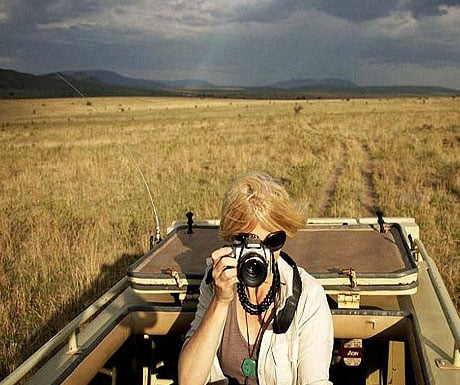
Things to do in the Serengeti
The classic game drive is the best way to explore the Serengeti. Two game drives a day either side of a delicious lunch and a much needed siesta is a classic day on safari in the Serengeti. Park regulations mean vehicles must be back before nightfall and walking safaris are prohibited.
However, a few private reserves adjoining the national park offer these activities. But be warned: enjoying a slice of the Serengeti in a private reserve does come at a big price. Namely, the Grumeti Reserve offers night drives and Kleins Camp in Loliondo to the east of the Serengeti offers walking safaris too. Serian Camp just to the south of the Serengeti offers excellent walking safaris and cultural experiences.
However, if you re seeking a variety in safari activities then the southern parks of Ruaha National Park and Selous Game Reserve offer these in abundance. In these parks, boating, walking and night time safaris are available, as they are not subject to such strict national park regulations as the Serengeti. Although the southern Tanzania parks are magical, remote, varied and wild, there is a reason travellers flock to The Serengeti: the wildlife is world class and The Great Migration a once in a lifetime spectacle. It is possible to combine time in The Serengeti with a visit to Ruaha with an internal flight which flits between the two. This is possibly the most spoiling combination of unbelievable wildlife and off the beaten track safari magic in the whole of Tanzania.
Food in the Serengeti
Safari food is a topic at the centre of many conversations in the bush. How in such a remote location and from a kitchen under canvas, can chefs produce such delicious meals? It is a mystery which torments visitors year after year.
Breakfast usually consists of a variety of fresh fruit, cereal, bacon, eggs and sausage. Lunch varies from day to day and camp to camp: it could be woodfired pizza, colourful salads and meats or a buffet of that and everything in between. One this is consistent; they are always mouthwateringly good. A safari supper is always an event: guests settle into the star and candlelit table and tuck into a three course meal which would rarely look out of place in a London restaurant.
Although Serengeti safari food is mostly the best of western cuisine, there are always opportunities to try local favourites. On safari, all you need do is ask!
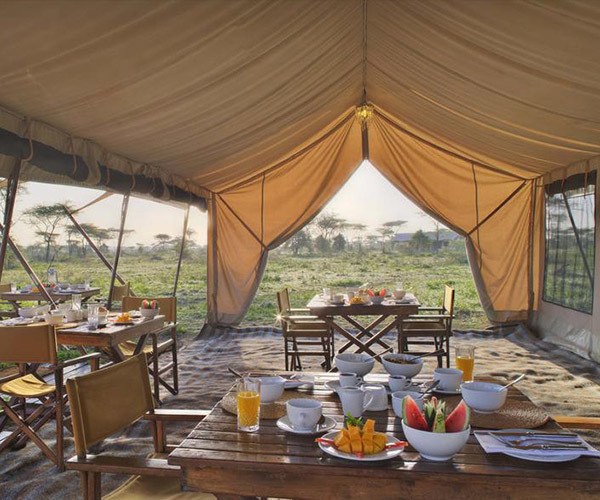
Amazingly for such remote locations, lodges and camps are always prepared to welcome visitors with special dietary requirements. Do not be put off a Serengeti adventure if you are gluten free, lactose intolerant, vegan or have any other special dietary needs. Safaris always cater for every guest with care and rigorous attention to detail. Make sure you mention any dietary requirements on booking so safari camps can prepare special meals for you in advance.
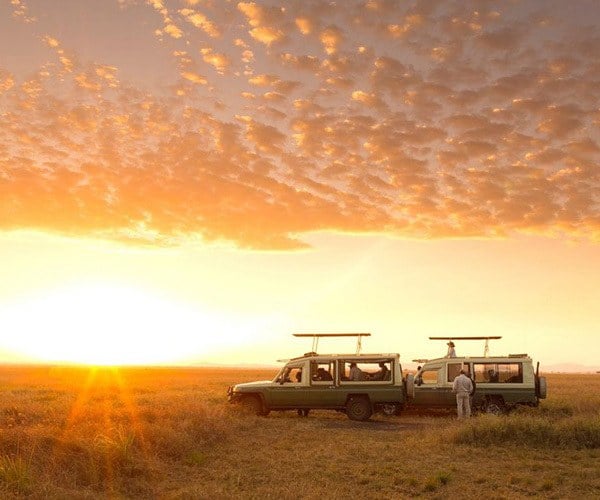
Getting around the Serengeti
As already established, the Serengeti is huge. It would be a mistake to assume driving from north to south is an easy task. It can be done, but with an overnight stop in Seronera, and even then, visitors would be bumped around in their 4x4s for seven plus hours a day. It is far better to fly between lodges, so more time can be spent exploring each location and stopping at amazing wildlife sightings.
By far the best way to travel is through Tanzania’s extensive flight network of 12 seater Cessna plains which hop around the country. In the Serengeti, flights between the different regions are frequent and trips take no longer than 45 minutes until you are in your next destination. At each airstrip, your guide will be waiting to transport you to camp. These flights must be booked in advance of travel, as the planes are not big so can easily get booked up.
Because these Cessna planes make relatively short trips, they stay quite close to the ground. From above, The Serengeti is a beautiful thing to behold, especially when the Great Migration are galloping below. Flying just above the endless Serengeti plains is a safari in itself and allows passengers to register how immense this area of outstanding wilderness is.
When to visit the Serengeti
The only time when the sun isn’t shining in The Serengeti is in Tanzania’s two rainy seasons: April through May, and in November. April and May mark the biggest splattering of water on the plains and are definitely not a time to go if you are after alfresco dining and a dose of vitamin D. November historically sees a short rainy season, however, usually it is not so dramatic with sunny spells and lighter showers. In recent years this short rainy season is more sporadic and can span from November into December, and rarely provides as much rain as it has historically promised.
Usually in East Africa, the best time to safari is always from July to October which marks the dry winter months. In these months, days are usually around 25 to 30 degrees Celsius and nights can be chilly. At this time, it rarely rains and the Serengeti gets drier and drier, until it is a desperate sight in November before the short rains come. When parks are dry, wildlife viewing is better as animals congregate at waterholes, making them easier to spot.
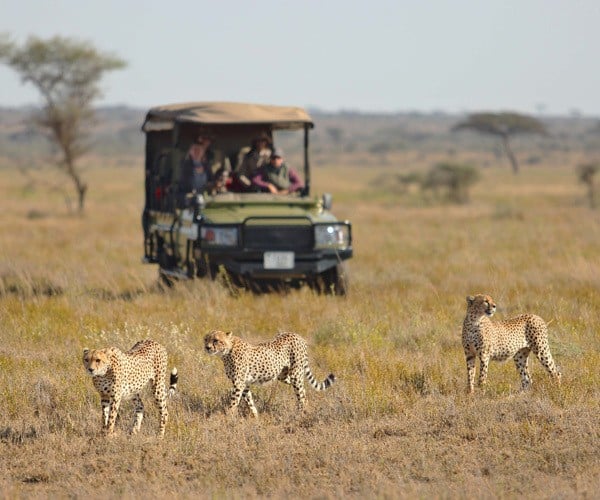
However, December to March is equally as brilliant in the Serengeti as the Great Migration congregate in the south of the park for calving season. The short rains in November, which in most safari areas means animals disperse and are harder to see, is not the case here. Millions of grazers are attracted to the grassy southern Serengeti plains, and with this moving feast comes many predators. As such, December to mid-March is also high season in the Serengeti.
June and November are still exceptional times to be in the Serengeti and offer excellent deals on luxurious camps. Just after the long rains, June sees the Serengeti burst into life. The grass grows long, making it slightly harder to spot predators but for the Great Migration it is rutting season, which is always a noisy and exciting affair. November still offers the chance of witnessing river crossings in the north of the park, but for half the price as in high season. If the short rains are late (which they often can be) wildlife viewing is eye-opening in November. The park is desperate to be quenched and as a result predator action is excellent as their prey risk all for a drink of water. As you can see, there is no straight forward answer to the question of when to go to the Serengeti: much depends on budget and the priorities of each visitor.
Events in the Serengeti
Here is a comprehensive guide of The Great Migration’s month-by-month route around the Serengeti.
January
Herds arrive throughout the month in the southern Serengeti Plains for calving season. They may be late, in which case visit at the end of the month to maximise your chance of catching them. For the best chance of seeing them stay in Ndutu.
February
Herds will be in the southern Serengeti plains. For the best chance of seeing them stay in Ndutu.
March
Herds may begin to disperse northwards, but the best place to stay for a chance of seeing them is still Ndutu.
April
Rainy season. The Great Migration disperses through Seronera and west towards Grumeti on their journey north. Best place to stay to see them is Seronera, however, they will be spread out across a huge area so sightings may not be as impactful as they are in drier months.
May
May is still rainy season. The Great Migration is still dispersed throughout Seronera and west towards Grumeti on their journey north. Best place to stay to see them is still Seronera, however, they will be spread out across a huge area so sightings may not be as impactful as they are in drier months.
June
A transitional month for the herds as they cover a huge distance in a small amount. of time, which means it is hard to predict where they will be at any given time. Generally, the herds travel north, but on different paths: some go west, others go through the center of the park. For the best chance of seeing them split your time between two camps: one in Seronera, and one in the western Grumeti region.
July
Herds should have reached Kogatende in the north of the park by July. It is the first month where visitors can see wildebeest crossing the Mara River. However, the migration is unpredictable and may be late. So if you are visiting in the first half of the month, split your time between either Grumeti or Seronera and Kogatende/Lamai.
August
Herds would have almost certainly reached Kogatende and Lamai by August, therefore to be in with a chance of seeing them (and a river crossing) stay in either of these areas.
September
Herds linger in Kogatende and Lamai, crossing the Mara River back and forth throughout September. So to be in with a chance of seeing them (and a river crossing) still stay in either of these areas.
October
Throughout October, it would be surprising if the herds have left the Kogatende and Lamai areas. Even if some have moved on, many will remain. So to be in with a chance of seeing them (and a river crossing) still stay in either of these areas.
November
Like June, November marks the beginning of a transitional period for the wildebeest. Whilst some herds would be moving south via Seronera and the east of the park, some will remain in Kogatende and Lamai. To be in with a chance of catching. alate river crossing stay in Kogatende or Lamai. To ensure you catch the herds, combine this with a stay in Seronera. However, November. isnot an easy month to predict.
December
December continues the transitional period for the herds, as they quickly descend south heading for the Ndutu plains. It is a tricky month to predict. To be in with your best chance of catching the herds combine Seronera (or even better, Namiri Plains) and the Ndutu region. However, December offers no Great Migration guarantees.
Luxury travel tips
Safaris are luxurious in their nature. No holiday provides quite such an intimate and personalised experience. The food is always luxurious and the accommodation is always safari chic. However, there are varying degrees of luxury and the price reflects this.
The most luxurious camps in the Serengeti can be found in Singita Grumeti: a private reserve to the west of the national park. Here sits Faru Faru, Sabora and Sasakwa. These lodges are some of the finest on the continent: they are utterly spoiling. For less overstated luxury, Sayari and Nomad Lamai in the north of the park offer swimming pools, a permanent structure and an exceptional safari experience. Tented camps around the Serengeti can be equally as luxurious, though don’t offer swimming pools.
Luxury can be found everywhere in the Serengeti: it just depends on how much you are willing to pay for it. Prices vary from USD $350 per person per night all the way up to $2,800 per person per night.

For an exclusive experience, some visitors prefer to book a private vehicle for their party. Usually, a six seater vehicle will be shared with other guests from camp. However, there is nothing quite like having a guide and vehicle all to yourself. To ensure privacy, parties either have to be six people or must pay a supplement to the camps which is usually a few hundred dollars per day. However, if parties are four people, you may be given a private vehicle anyway, so paying the additional money just for peace of mind can sometimes be an error.
Safari lodges love honeymooners. If you are newly-weds, ensure you ask for the honeymoon suite. These usually have extra romantic mod-cons such as an outside bath or more spacious rooms. Not a honeymoon? No matter. Make sure you mention to your tour operator if your trip marks a special occasion. You will find your experience peppered with little luxuries to ensure you will remember your Serengeti trip for years to come.
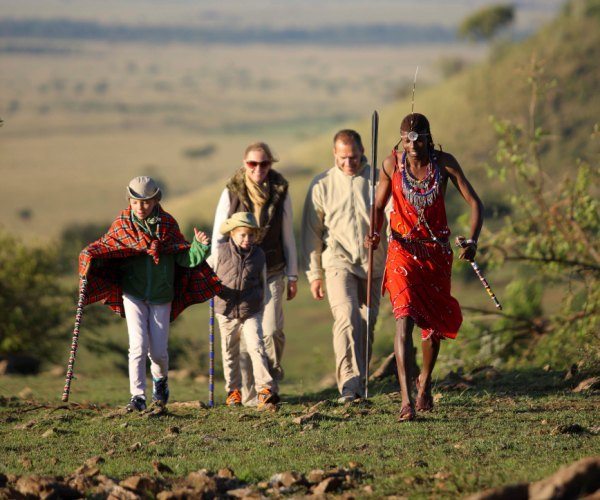
Language and culture
Like much of East Africa, in Tanzania the main language is Swahili. However, staff and guides are also excellent at English. Even so, learning a few Swahili words is appreciated and often provides a fun task for visitors on a Serengeti safari.
Northern Tanzania is especially colourful culturally, as many Maasai people call it home. In camps and lodges, lots of the staff are Maasai. Although modernised, the culture is still firmly embedded in this region of Tanzania. It is a proud culture and learning about their traditions is a fascinating part of visiting the Serengeti.
Useful phrases
- Jambo – Hello
- Asante – Thank you
- Asante sana – Thank you very much
- Habari gani – How are you?
- Baadaye – See you later
- Kwa heri – Goodbye
- Lala salama– Goodnight
- Nafurahi kukuona – Nice to meet you
- Ndiyo – Yes
- Napana – No
- Tafadhali – Please
- Tembo – Elephant
- Simba – Lion
- Sawa – Okay
- Jina laku nani – What is your name?
- Jina langu ni – My name is
- Rafiki – Friend
- Maji – Water
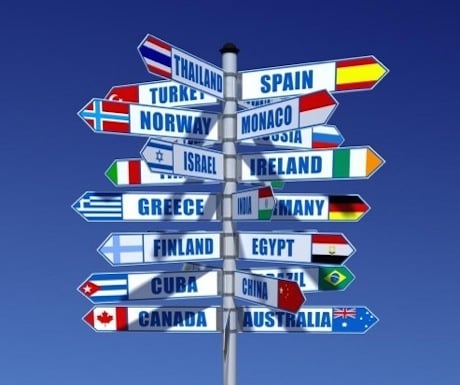
Weather in the Serengeti
Visiting the Serengeti National Park soon? See below for the latest weather forecast for the Serengeti.
SERENGETI WEATHERUseful information
Currency
Tanzanian shillings are common in towns and can be used in camps. However, US dollar is more commonly used for in-camp transactions and tipping. See www.xe.com for current exchange rates with the British Pound and the American Dollar.
Power
Camps all have some form of electricity. In the mobile camps, guests may only be able to charge electronics in the main area. No converter is necessary, as most will take the standard British plugs. In other camps, charging is easy in your room.
Telecommunications
It is unlikely you will get mobile signal in the Serengeti, and if you do it will probably cost a lot. It is better to wait until you get back to camp, and make your calls and messages from the available Wifi there.
Timezone
GMT + 3 hours
The beauty of visiting Tanzania from the UK is that there is no jet lag, so you can begin your safari refreshed and rested.
Tipping
Tipping is expected on safari. Roughly, you should tip your safari guide $10 per person per day, and the same should go in the staff tip box at the end of your trip. Tip your guide at the end of your safari when saying your goodbyes.
WiFi
Free Wifi can be found in most camps, however, sometimes it may only be accessible in either your room or the main area.
